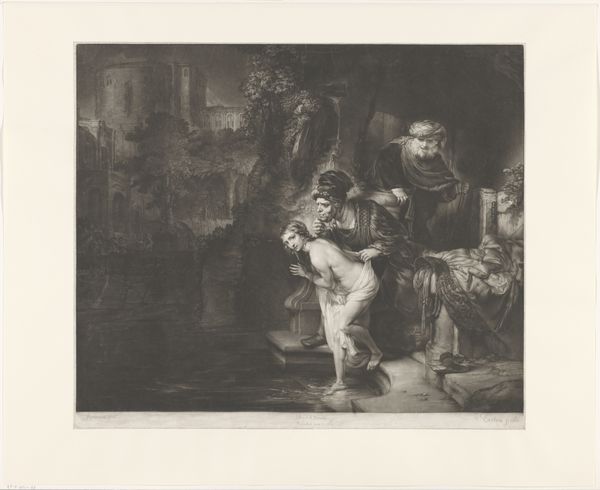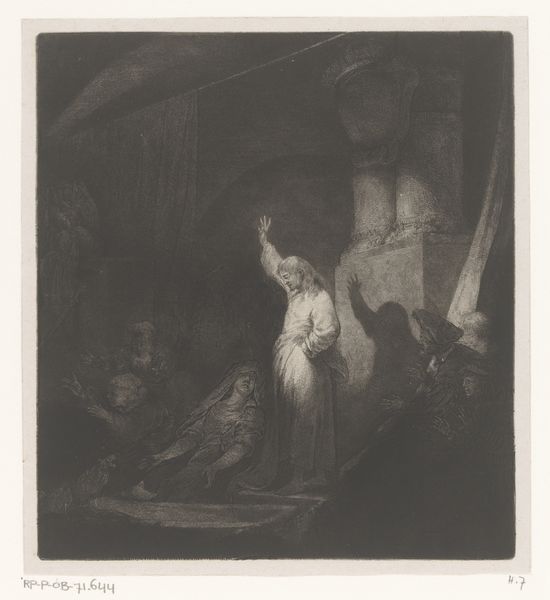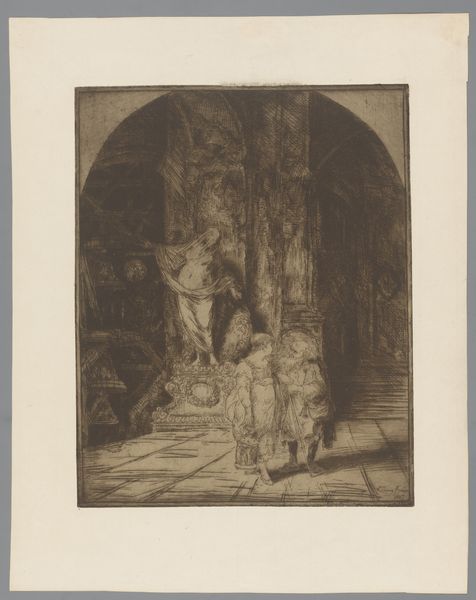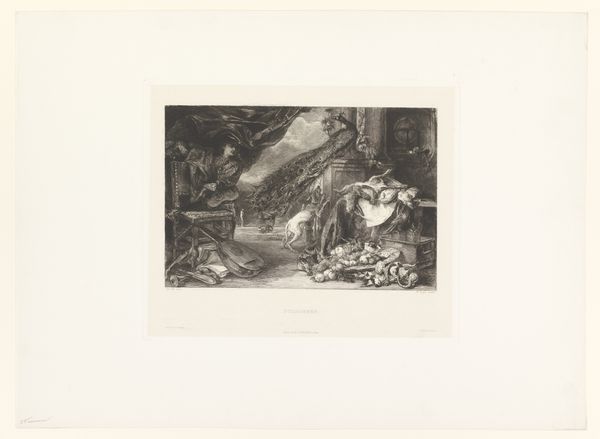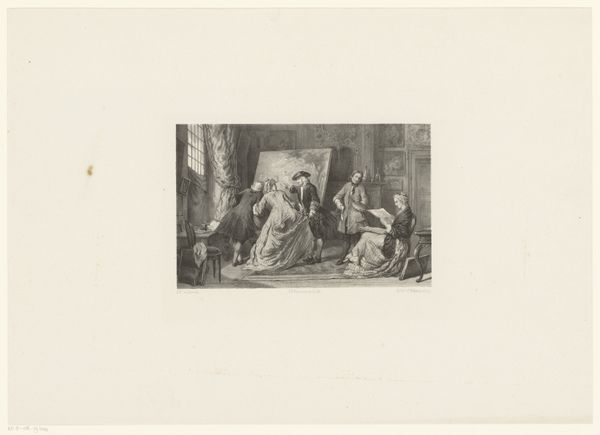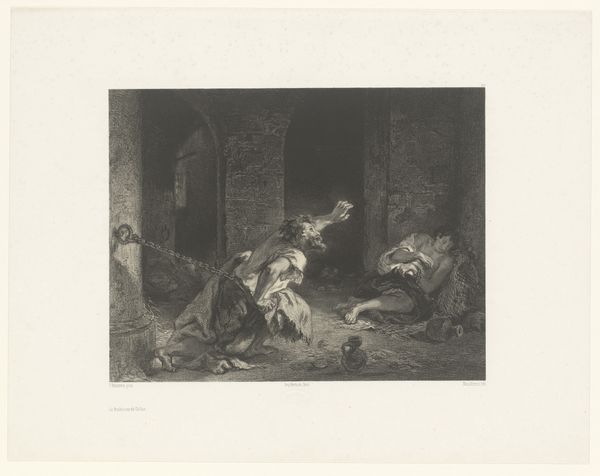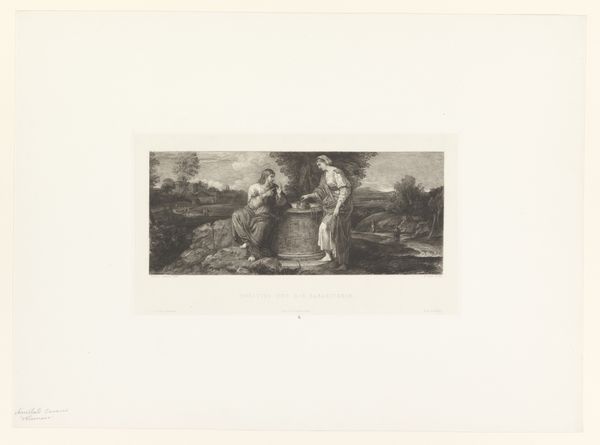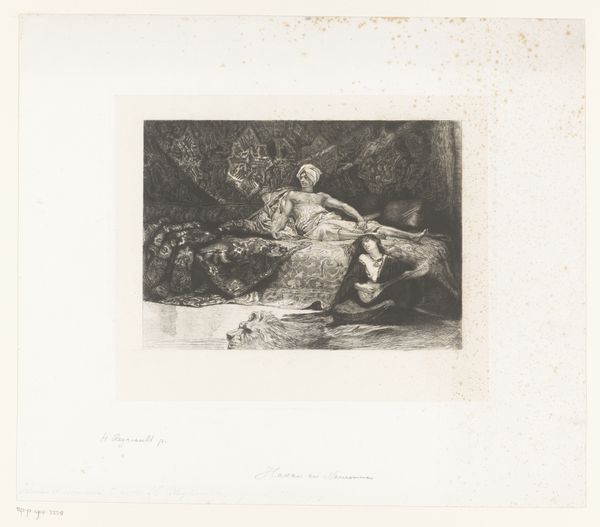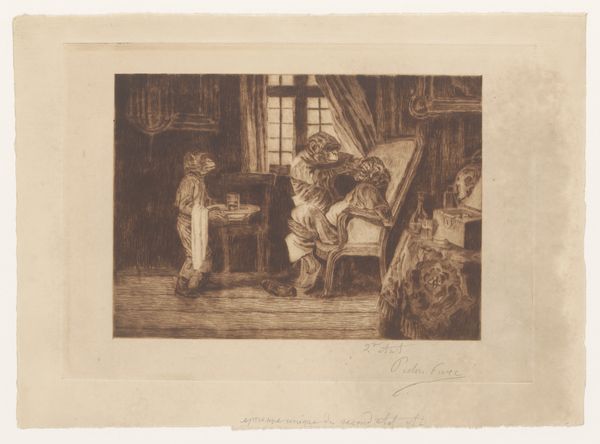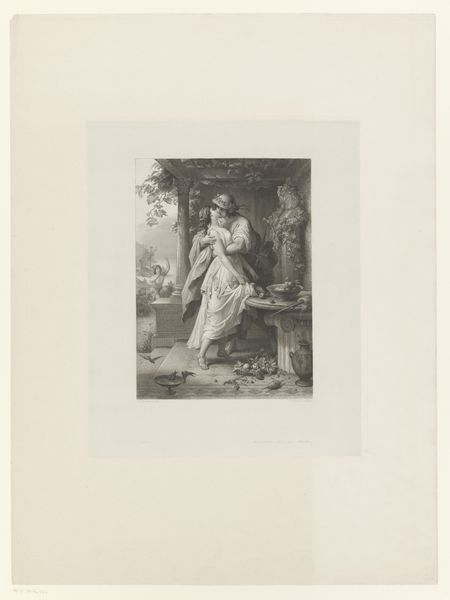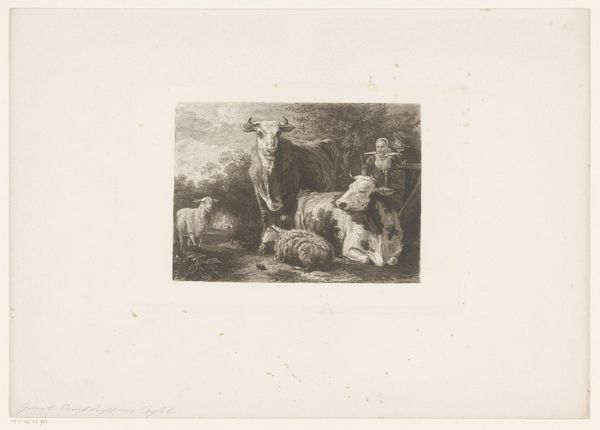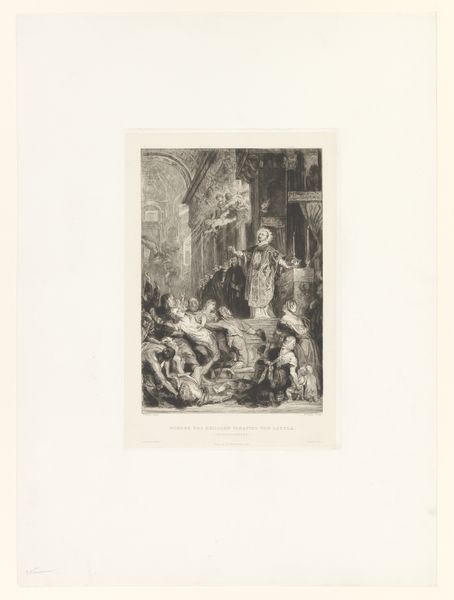
Dimensions: height 517 mm, width 617 mm
Copyright: Rijks Museum: Open Domain
Curator: William Unger created this etching and drypoint sometime between 1857 and 1908, taking inspiration from the biblical story of Susanna and the Elders. It's currently housed here at the Rijksmuseum. What strikes you first about this work? Editor: Unease. An immediate sense of dread. It's the lurking figures, their faces obscured in shadow, juxtaposed with Susanna's vulnerability as she enters the water. The dramatic lighting definitely amplifies that. Curator: Unger was quite the printmaker; his talent shines here, I think. The landscape almost has a ghostly shimmer, adding to that heavy atmosphere you picked up on. Susanna’s story is intense, two elders spying on her and then trying to blackmail her after she refuses them. What's your reading of this specific depiction? Editor: The gaze, the male gaze. Susanna’s autonomy is clearly being violated. What's so haunting here is how it embodies the power dynamics at play; it is about gender, power, and transgression. You have these power figures lurking in the dark versus Susanna caught in the light, completely exposed and vulnerable. Curator: Exactly. You feel that entrapment. Unger definitely knew how to work with dark and light, the Chiaroscuro feel adds drama but the soft details soften the theme, ever so slightly. Does that make sense? Editor: Absolutely. The technique lends itself to that reading. The ambiguity, or rather, that pre-crime suspense where the elders hover between mere observation and overt threat, is unsettling. What’s interesting is that this scene has been depicted so many times, especially in the Baroque period. It was popular to show her distress as well as sensuality which always makes me think of how we look at such subjects now. Curator: I’m so interested in what he was hoping to evoke with it, how that differs from its purpose then versus what the purpose is to us. Maybe that’s art as it should be—a beautiful reflection of the present using the past as its mirror? Editor: Well said, and it speaks to the painting’s resonance. It’s that the issues the artist touches on still feel relevant, which, if anything, shows just how crucial it is that we confront this historical piece in today's discourse.
Comments
No comments
Be the first to comment and join the conversation on the ultimate creative platform.
